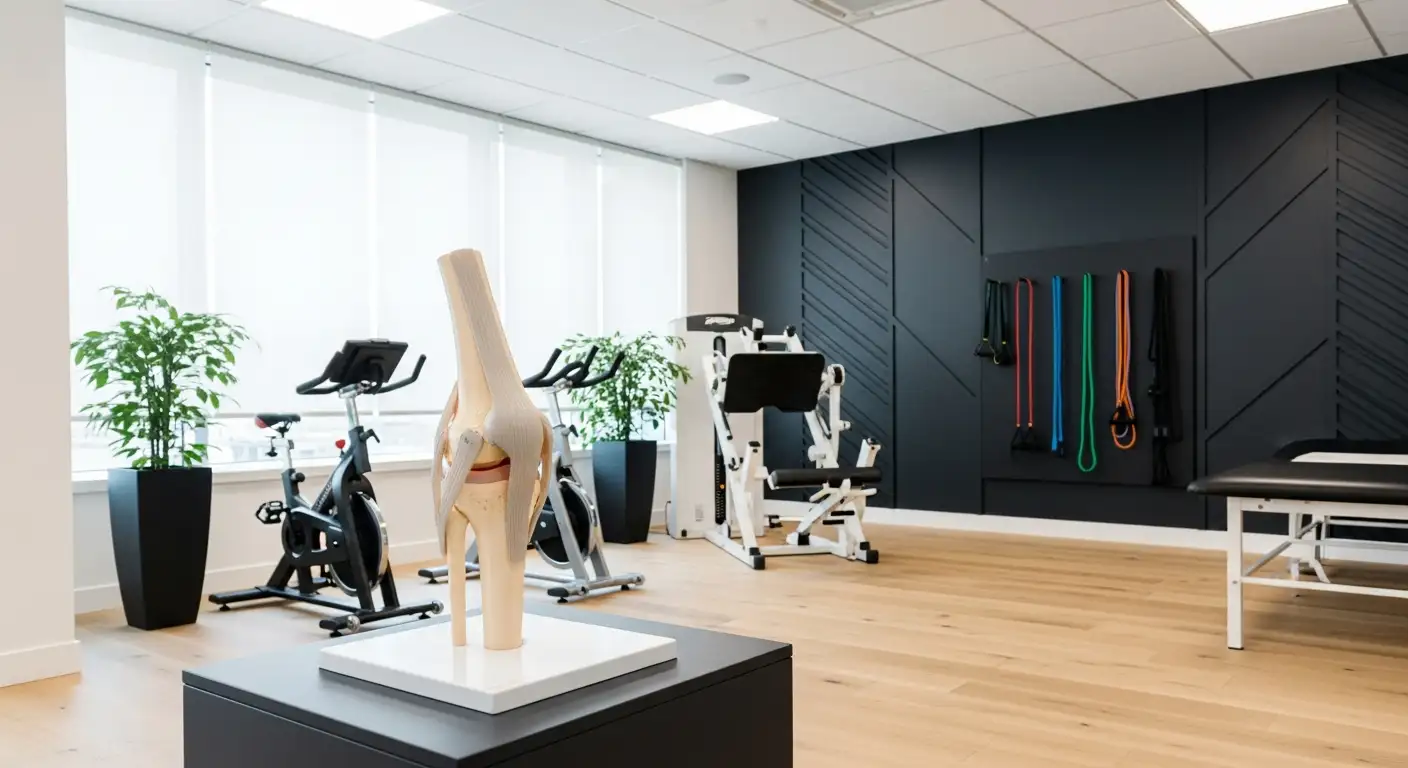Preparing for Walking Post-Surgery
Following a knee surgery, it's crucial to prepare for the recovery period, especially related to walking and mobility. This includes adjusting your cane and ensuring the right footwear to facilitate healing and regain flexibility.
Adjusting Your Cane
Learning how to adjust and use a cane properly is a critical step in walking after knee surgery. The cane should be held on the opposite side of the body from the affected knee to provide stability and support. For example, if the right knee underwent surgery, the cane should be held in the left hand while walking. This technique helps provide more stability and reduce weight on the affected knee.
To adjust the cane properly, the handle of the cane should be at the same level as the individual's wrist while their arm is at their side with a slight bend in the elbow. This adjustment ensures optimal support and comfort while walking with the cane.

Remember the acronym "COAL" which stands for "Cane Opposite Affected Leg" to always use the cane on the side opposite the affected or surgical leg, aiding in balance and stability during walking [1].
It's also essential to ensure that the rubber tip of the cane is in good condition to provide sufficient traction and support. Regularly checking and replacing worn tips can prevent slipping and falls during use.
Importance of Footwear
The right footwear is equally important in ensuring a safe and supportive walking experience after knee surgery. Shoes should provide a stable base and should not slip while walking. Avoid high heels, flip flops or loose-fitting shoes that do not provide adequate support. Always wear your shoes when walking with a cane, even at home, to prevent slips and falls.
Using a cane after knee surgery should always be under the guidance of a physical therapist or healthcare professional. Proper instruction on walking techniques with a cane can enhance recovery, prevent falls, and promote overall healing progress for individuals undergoing knee surgery.
Essential Walking Techniques
Learning to walk with a cane after knee surgery is a crucial aspect of the recovery process. It helps to provide support and stability, reduces strain on the injured knee, and aids in improving gait patterns. In this section, we will cover the basic walking steps and techniques for navigating stairs post-surgery.
Basic Walking Steps
To walk with a cane after knee surgery, it's important to follow a specific sequence of movement. Begin by stepping forward with the uninjured or stronger leg. Then move the cane forward, followed by the affected leg. This sequence can help improve gait pattern and reduce stress on the surgical knee during walking [3].
It's crucial to ensure the cane is the proper height for optimal support and stability. The top of the cane should align with the crease of the wrist while standing up straight.
The cane should be held on the side of the unaffected leg. As you walk, the cane and the affected leg should move together to maintain a natural and balanced gait. This coordination can help reduce strain on the injured knee during movement [5].
While walking, focus on maintaining an upright posture and looking straight ahead. This can help improve balance and stability, reducing the risk of falls or injuries during the recovery process.
Navigating Stairs
Stairs may seem daunting after knee surgery, but with the right technique, they can be navigated safely. When going up the stairs, lead with the unaffected leg. When descending, lead with the injured leg. This method can help maintain balance and reduce pressure on the injured knee while climbing stairs [5].
Remember, safety is paramount when learning how to walk with a cane after knee surgery. If you're unsure about any aspect of walking or navigating steps, consult with your healthcare provider or physical therapist. They can provide personalized guidance and ensure you're using the right techniques for your recovery journey.
Physical Therapy and Rehabilitation
Recovering from knee surgery is a process that requires patience, effort, and dedication. Physical therapy plays a crucial role in this recovery journey, helping restore strength and mobility in the knee. This section will cover the importance of physical therapy and discuss recommended exercises for individuals learning how to walk with a cane after knee surgery.
Importance of Physical Therapy
Physical therapy after knee replacement surgery is typically divided into three phases: in the hospital, at home, and outpatient therapy. It begins in the hospital, one to three days after surgery, where patients start exercises to improve their knee's range of motion and strengthen their quadriceps muscle, a crucial part of post-replacement recovery.
The therapy transitions to the home environment about 2 or 3 weeks after surgery. During this stage, patients learn how to walk with a cane, focusing on gradually increasing strength and stability in the knee while continuing with the recommended exercises.
Outpatient therapy, which can extend up to 4 months post-surgery, is vital in helping patients strengthen muscles, improve flexibility, and increase cardiovascular capacity. These exercises are essential for individuals to return to their normal activities post-surgery.
Recommended Exercises
According to Vincent Luppino, a physical therapist at HSS Rehabilitation, patients are advised to continue with the prescribed exercise program 2 or 3 times a week for at least 8 to 10 months post-op. From months 10 to 12, patients should maintain weekly knee workouts while incorporating other types of activities to support long-term recovery [6].
Quadriceps exercises are particularly important during post-replacement recovery, as knee pain often leads to weakness in these muscles. Strengthening the quadriceps involves movements like extending the knee, squatting, stepping, and stretching. These exercises help improve strength and flexibility in the legs, aiding in the recovery process.
These exercises, when performed consistently and correctly, can significantly aid in the recovery process and help individuals regain their strength and mobility after knee surgery. Always consult with a physical therapist or healthcare professional before starting any new exercise program to ensure it's safe and suitable for your specific needs.
Safety Measures and Precautions
Safety is paramount when recovering from knee surgery and learning how to walk with a cane. It involves maintaining good posture and making necessary home safety modifications.
Maintaining Good Posture
Proper posture is critical when using a cane post knee surgery. This includes keeping the shoulders relaxed, the head up, and the back straight, which helps maintain balance and minimize strain on the legs. Furthermore, focus on maintaining an upright posture and looking straight ahead while walking. This improves balance and stability, reducing the risk of falls or injuries during the recovery process.
It's also crucial to ensure the cane is the proper height. The top of the cane should align with the crease of the wrist when standing up straight. This provides the right support and stability for walking.
Home Safety Modifications
At home, it's important to make modifications to improve safety while walking with a cane after knee surgery. Here are some suggestions:
- Remove tripping hazards: Make sure that walking paths are clear of obstacles such as cords, rugs, or clutter.
- Install handrails: Consider installing handrails in areas like the bathroom or stairs to provide additional support.
- Improve lighting: Ensure there's adequate lighting, especially in areas where you frequently walk.
- Use non-slip mats: Place non-slip mats in the bathroom and kitchen to prevent slipping.
Lastly, footwear plays a significant role in ensuring safety. It's recommended to wear flat, comfortable shoes with good tread while using a cane. This type of footwear provides stability and reduces the risk of slipping or tripping.
These safety measures and precautions are crucial steps towards a safe and successful recovery after knee surgery.
The Role of Walking Aids
Walking aids play a crucial role in mobility and recovery for individuals after knee surgery. They provide stability, reduce pressure on the affected area, and ultimately aid in the healing process. In this context, we'll discuss how to choose the right walking aid and the transition from canes to walkers as part of the recovery process.
Choosing the Right Walking Aid
Choosing the right walking aid is vital to ensure a safe recovery after knee surgery. Factors such as the individual's balance, stability, strength, and degree of mobility can influence the choice of walking aid. For those with minor balance or stability issues, or some leg or trunk weakness, a cane can be beneficial. It can help walk comfortably and safely, potentially enabling independent living, especially for the elderly.
For more significant stability issues, such as after a total knee replacement or total hip replacement surgery, a walker can provide the necessary stability. Walkers allow users to offload some weight from their lower body, using their arms to support some body weight. As strength and endurance improve, more weight can be carried by the legs.
It's important to adjust a cane properly after knee surgery. The handgrips should be at the level of the wrist, allowing for the correct amount of bend in the elbow during walking [2].
The cane should be used on the side opposite the surgery to help with balance and reduce weight on the affected knee. This can significantly aid in improving mobility and reducing pain during walking after knee surgery.
Transitioning from Canes to Walkers
Transitioning from canes to walkers is a significant step in recovery after knee surgery. This transition generally occurs when the individual has regained enough strength and balance to safely support more of their body weight.
When using a cane, it's essential to avoid placing too much pressure on it while walking. The cane should provide balance and light support, but the majority of the body weight should still be on the unaffected leg. Proper weight distribution helps prevent strain on the arms and shoulders while using the cane [4].
Transitioning from a cane to a walker should be done under the guidance of a healthcare professional or physical therapist. They can provide instruction on walking techniques with a walker to enhance recovery, prevent falls, and promote overall healing progress.
Remember, the goal of using a walking aid after knee surgery is to provide support, maintain balance, and ultimately, help you walk with confidence throughout your recovery.
Long-Term Recovery and Care
Post knee surgery, the road to recovery is a gradual process that requires patience, resilience, and dedicated effort. This section focuses on two critical aspects of long-term care: breaking the "habitual limp" and the significance of continuing exercises post-recovery.
Breaking the "Habitual Limp"
Post-surgery, patients may develop an altered walking pattern or a "habitual limp" due to pain, weakness, or lack of motion. This limping pattern, if not addressed, could become a habit that is challenging to break over time. The brain starts to recognize this limping pattern as the norm, making it difficult to revert to a correct walking pattern [9].
Using an appropriate walking aid like a cane, crutch, or walker can help maintain a regular gait, prevent the formation of harmful habits and protect other body parts, contributing to a smoother recovery process [9].
Breaking the "habitual limp" is often identified as one of the most challenging tasks for therapists, as it requires constant thought and effort from the patient to avoid limping during walking. There is no rush to discard the cane before the patient is ready, as it can significantly benefit the recovery journey [9].
Continuing Exercise Post-Recovery
Continuing with the prescribed exercise program post-recovery is critical for sustaining the progress made during rehabilitation. Vincent Luppino, a physical therapist at HSS Rehabilitation, recommends continuing the prescribed exercise program 2 or 3 times a week for at least 8 to 10 months post-op. After that, patients are advised to keep up with knee workouts once a week while incorporating other types of activities to support long-term recovery.
Exercises such as ankle pumps and circles, thigh squeezes (quadriceps sets), leg slides (abduction/adduction), straight leg raises, lying kicks (short arc quadriceps), heel slides (hip and knee flexion), and sitting kicks (long arc quadriceps) should be performed to strengthen muscles and improve mobility after knee surgery.
Furthermore, patients are advised to walk frequently throughout the day post-surgery to facilitate a return to outdoor and community walking, contributing to the overall recovery process.
In conclusion, breaking the "habitual limp," and continuing exercises in the long-term are two crucial components of the post-surgery journey. These steps will help individuals gain the confidence to walk independently and return to their regular activities, marking the successful end of the recovery process.
References
[1]: https://www.verywellhealth.com/walking-with-a-cane-2696294
[2]: https://www.silvercross.org/care-treatment/orthopedics/joint-replacement-surgery-education/total-knee-physical-therapy/cane-or-walker-adjustments-knee-surgery/
[3]: https://www.albertahipandknee.ca/assets/Walking%20Aids%20Hip%20and%20Knee%20Replacement.pdf
[4]: https://fashionablecanes.com/blogs/news/cane-to-recover-knee
[5]: https://www.youtube.com/watch?v=uwmzffEKxLU
[6]: https://www.hss.edu/article_exercises-after-knee-replacement.asp
[7]: https://www.verywellhealth.com/how-to-adjust-a-cane-2696292
[8]: https://orthoinfo.aaos.org/en/recovery/how-to-use-crutches-canes-and-walkers/
[9]: https://buffalorehab.com/blog/benefits-using-cane-surgery/
[10]: https://www.allinahealth.org/health-conditions-and-treatments/health-library/patient-education/total-knee-replacement/after-surgery/knee-exercises




